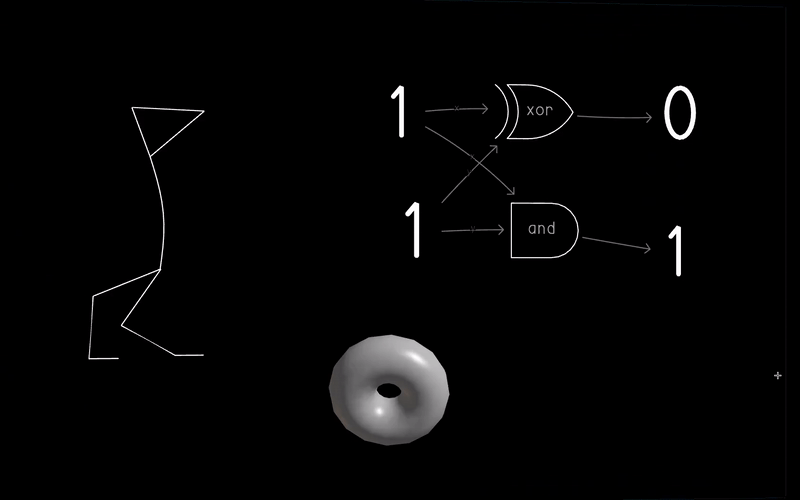I’m Karl Rosenberg, a recent computer science graduate from NYU and an incoming PhD student.(Future Reality PhD student?)
As I am interested in the application of technology to education, I am excited to work on Chalktalk at the Future Reality Lab.
For newcomers, this video demonstrates Chalktalk well. Chalktalk is a presentation and visualization tool in which your sketches come to life and interact. You can create complex systems to demonstrate concepts, communicate, or fill the world with animated characters.
Many of my explorations have focused (and will focus) on Chalktalk as a platform for education, and there is certainly much to do and much to be done.
“What, specifically?”
For a couple of examples:
It would be great to see Chalktalk incorporating a sophisticated, yet intuitive system for building complex structures.
Suppose that you want to save a few of the sketches you have drawn as a single entity — a “composite sketch.”
Then maybe after having accumulated half a dozen of these sketches-that-contain-sketches, you want to save them as one sketch too. Alternately, you could decompose your composite/super-sketch into its components to re-examine your system. You could reuse and build your sketches atop each each other, much like the concepts you learn. At the same time, Chalktalk would improve as an environment for idea drafting and creativity, or as a sort of notebook that helps record your learning paths and thought-processes.
We are working on it!
In addition, we are far along in the process of developing a VR version of Chalktalk. More accurately, Chalktalk sends raw data over a network to an engine such as Unity, which can interpret that data independently. Those are just technical details. We are always experimenting with ways to improve performance as well as the experience itself. Zhenyi recently implemented a 360° video-like view (or 2π video-like view for radians fans) for Chalktalk VR. This makes it possible to see sketches all around you. I have also been working towards sending the aforementioned data from Chalktalk to the client side more efficiently by splitting it and tracking the pieces as they arrive on the client side. This way, we will probably be able to draw several-mile-long line strokes. (There is someone out there who would try it.) More seriously, we are getting there.
I think that as Chalktalk continues to develop, all of the ideas and pieces will coalesce into something even more wonderful.
Before the close of this blog post, I would like to revisit the fact that Chalktalk has been released as open-source project and is accessible here: https://github.com/kenperlin/chalktalk. We would love to see your thoughts, feedback, and pull requests. Click here to read the installation steps and here to see the contribution guidelines.
Chalktalk has several computer-, graphics-, math-, and science-related sketches by default, but there are other subjects to explore.
I wonder: what would sketches for philosophy or culinary studies look like?
Thinking about all of the possibilities might make your head spin!

Next time: I don’t envision a series yet, so I will likely (but not certainly) cover something different.
~Karl


Pingback: Curveball – Future Reality Lab